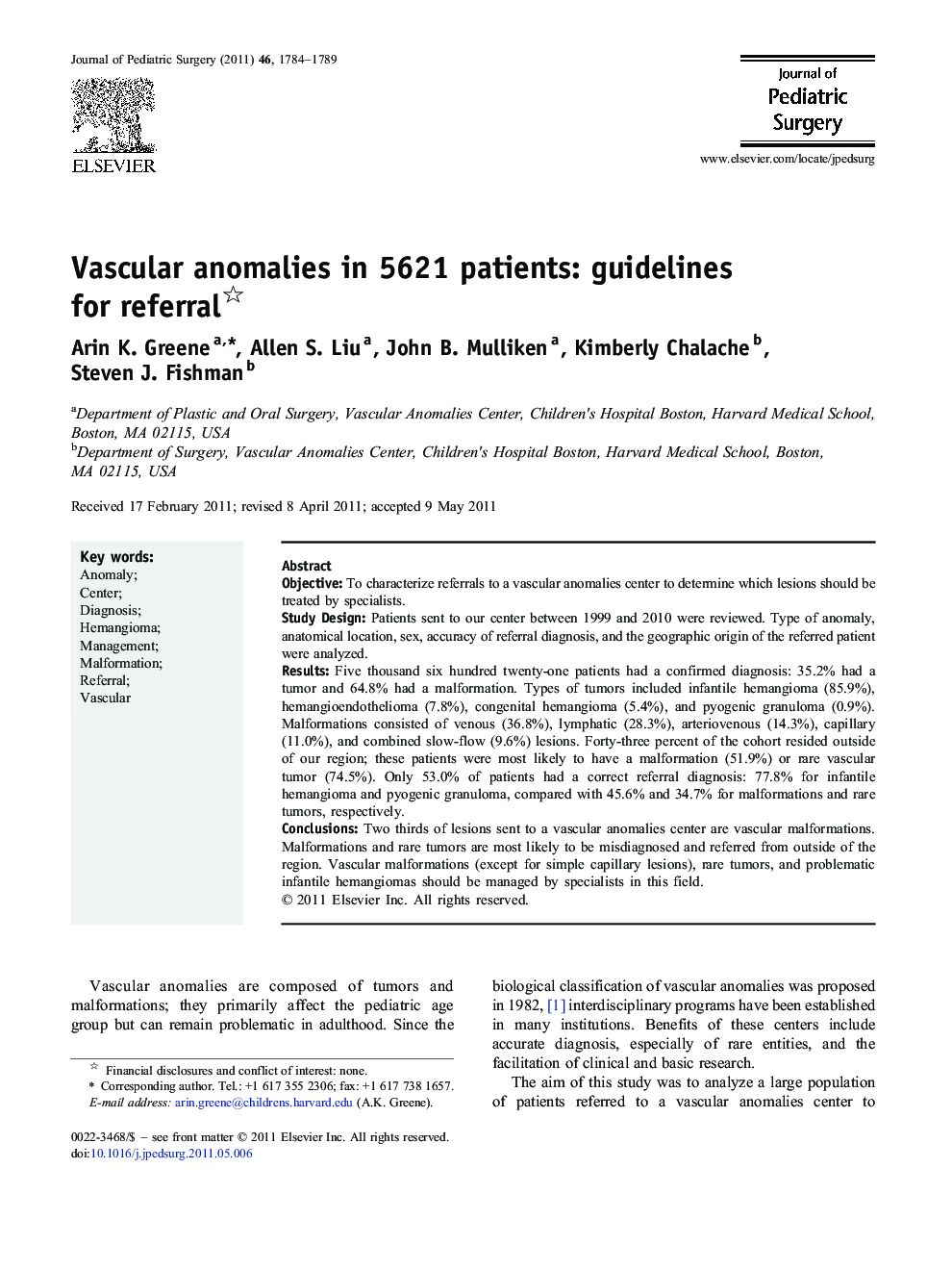| Article ID | Journal | Published Year | Pages | File Type |
|---|---|---|---|---|
| 4156963 | Journal of Pediatric Surgery | 2011 | 6 Pages |
ObjectiveTo characterize referrals to a vascular anomalies center to determine which lesions should be treated by specialists.Study DesignPatients sent to our center between 1999 and 2010 were reviewed. Type of anomaly, anatomical location, sex, accuracy of referral diagnosis, and the geographic origin of the referred patient were analyzed.ResultsFive thousand six hundred twenty-one patients had a confirmed diagnosis: 35.2% had a tumor and 64.8% had a malformation. Types of tumors included infantile hemangioma (85.9%), hemangioendothelioma (7.8%), congenital hemangioma (5.4%), and pyogenic granuloma (0.9%). Malformations consisted of venous (36.8%), lymphatic (28.3%), arteriovenous (14.3%), capillary (11.0%), and combined slow-flow (9.6%) lesions. Forty-three percent of the cohort resided outside of our region; these patients were most likely to have a malformation (51.9%) or rare vascular tumor (74.5%). Only 53.0% of patients had a correct referral diagnosis: 77.8% for infantile hemangioma and pyogenic granuloma, compared with 45.6% and 34.7% for malformations and rare tumors, respectively.ConclusionsTwo thirds of lesions sent to a vascular anomalies center are vascular malformations. Malformations and rare tumors are most likely to be misdiagnosed and referred from outside of the region. Vascular malformations (except for simple capillary lesions), rare tumors, and problematic infantile hemangiomas should be managed by specialists in this field.
